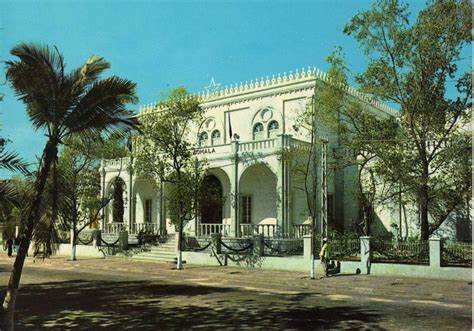
On 1 July 1960, the newly independent Republic of Somalia established the Banca Nazionale Somala
The Somali National Bank was established by Decree-Law No. 3, issued on June 30, 1960, and officially published in Official Publication Nos. 2 and 6 on December 10, 1960. On July 1, 1960, the Somali National Bank (Banca Nazionale Somala) was officially opened, marking a new era for Somalia following its independence, when it took control from the Italian administration (Amministrazione Fiduciaria Italiana della Somala) or “AFIS”. With this, the National Bank of Somalia assumed responsibility for the country’s currency.
The Somali National Bank began its operations on July 4, 1960. This was following the public holidays on July 2nd and 3rd, 1960, which celebrated the independence of the southern regions and the union of the two regions. The Decree-Law that established the Somalia National Bank was later amended by Law No. 2 on January 13, 1961, after being ratified by Parliament.
According to the Banking Law, the Somali National Bank is an institution with legal personality and operates independently. The bank’s key duties include managing and coordinating the country’s economy, budgeting government finances, safeguarding the value of the Somali Shilling, regulating economic growth, and formulating economic and investment policies for the government.
The Somali National Bank operates as a state institution with a legal personality and independent administration. It began with two distinct departments: the “Issue Department” and the “Banking Operations Department.


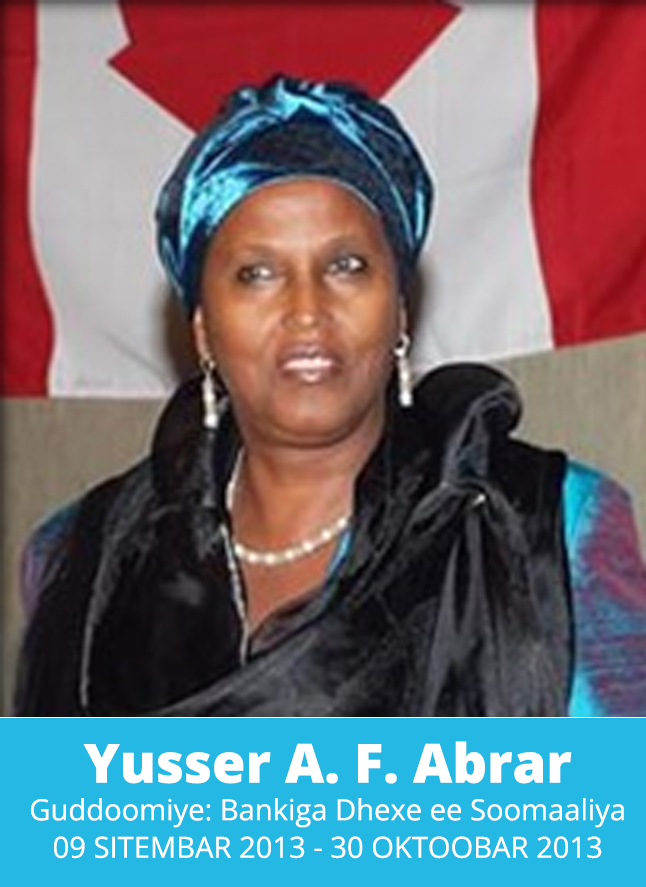
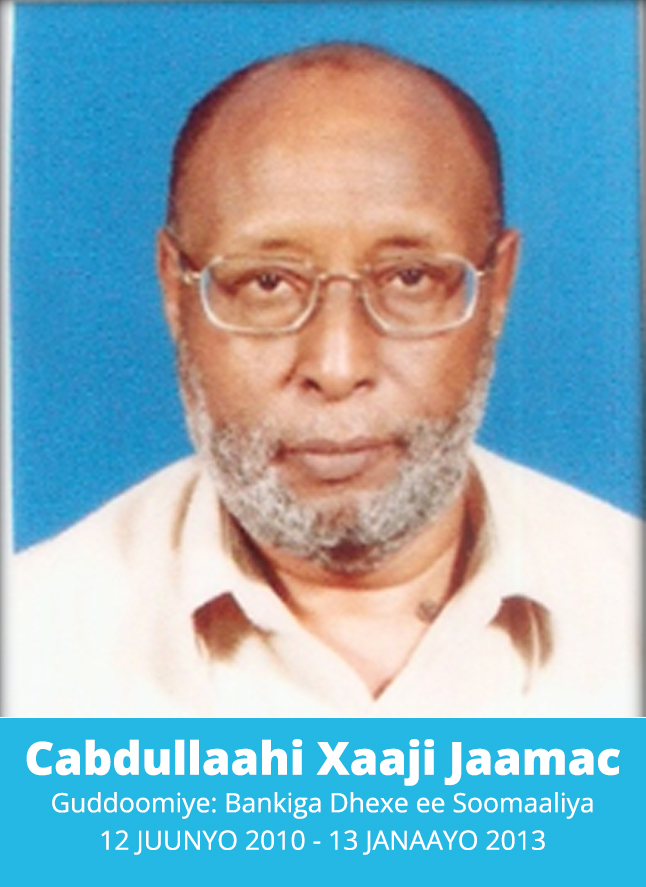









As Somalia moved closer to independence, the Italian Federal Government, which was responsible for the administration of Southern Somalia at the time, established the “Cassa per la Circolazione Monetaria della Somalia (C.C.M.S.)” in 1949, headquartered in Rome, Italy. This institution began printing a national currency named “SOMALO,” which replaced the former “East African Shilling.”
The SOMALO currency was ratified through Legislative Decrees Lr. 15 and 16 issued on 16 May 1950. The central office of the monetary institution was transferred from Rome to Mogadishu on 6 April 1959, where it fully assumed the responsibilities and assets of the Mogadishu branch of Banca d’Italia.
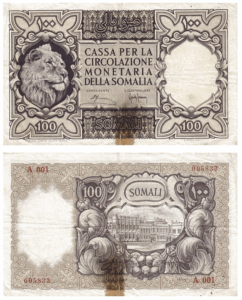
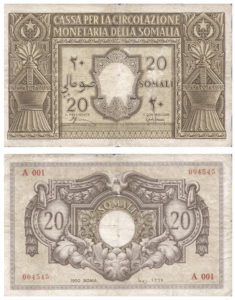
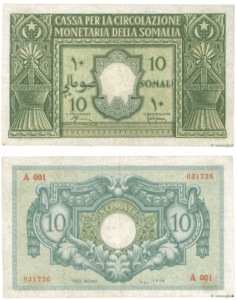
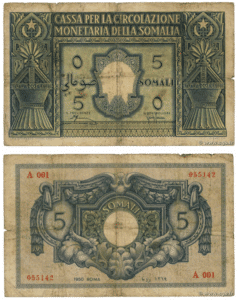
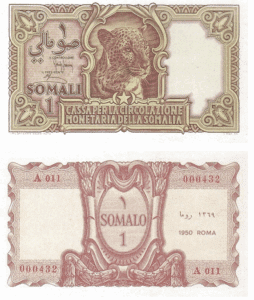
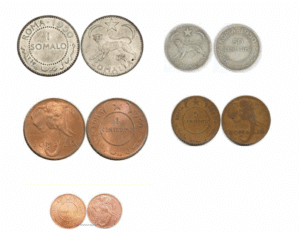
After gaining independence, the Somali Government introduced a new national currency called the Somali Shilling. Its technical specifications were outlined in Presidential Decree Lr. 86 of 5 March 1962 and formally issued under Legislative Decree Lr. 2 of 5 June 1962. It officially entered into circulation throughout the country on 15 October 1962.
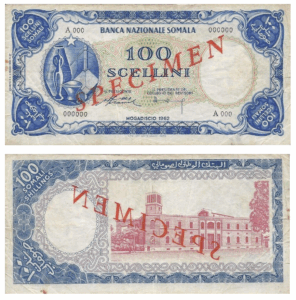
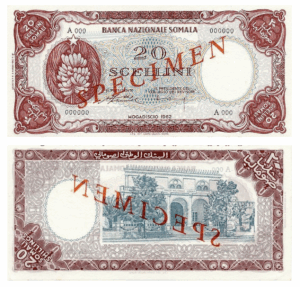
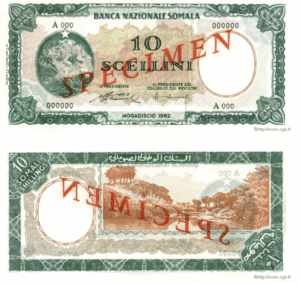
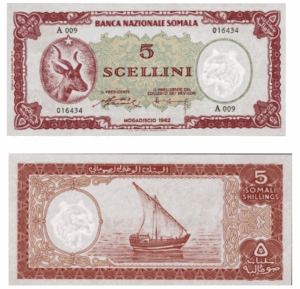
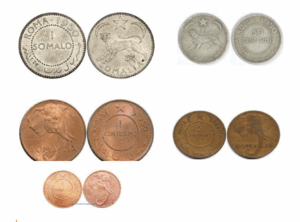
In 1968, the National Bank of Somalia replaced the earlier coinage in use since the 1950s with new designs, sizes, inscriptions, and metals. These coins were approved through Presidential Decrees Lr. 174 and 175 issued on 3 July 1968 and entered circulation on 4 November 1968. The previous coins were withdrawn by 31 December 1970.
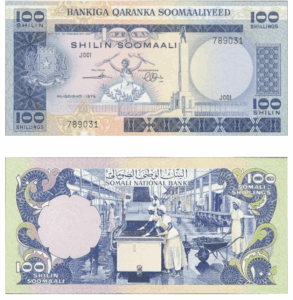
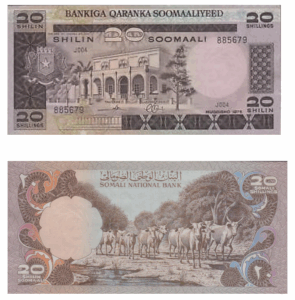
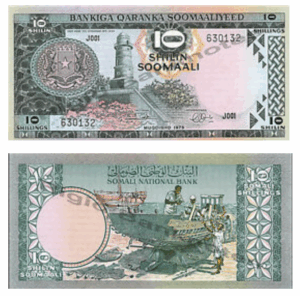
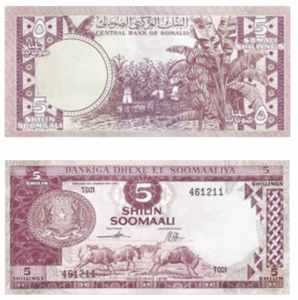
![]()

As part of institutional reforms, Law Lr. 21 of 8 February 1975 officially renamed the “National Bank of Somalia” as the “Central Bank of Somalia.” This change also affected previously issued banknotes authorized under Presidential Decree Lr. 134 of 1974.
Newly printed banknotes bearing the updated name were authorized by Decree Lr. 74 of 6 December 1977 and enforced through Ministerial Decree Lr. 18 of 22 March 1978. These banknotes entered circulation nationwide starting 25 March 1978.
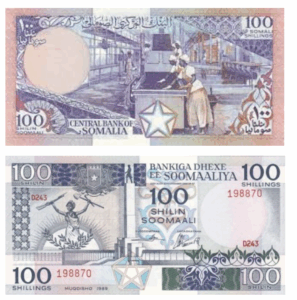
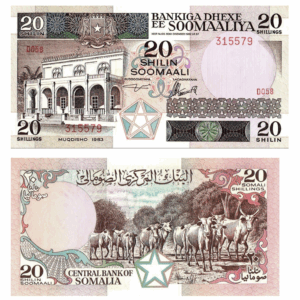
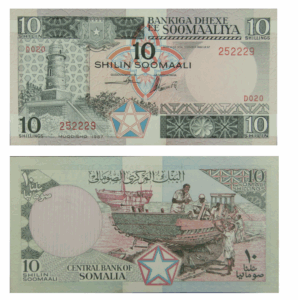
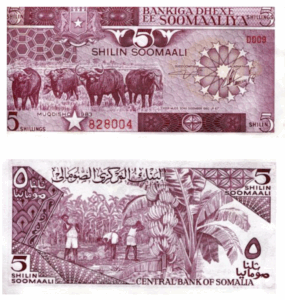
![]()
![]()
Referring to Somalia’s monetary laws, the Governor of the Central Bank submitted a request to issue new banknotes. The Supreme Revolutionary Council approved the issuance through Decree Lr. 67 of 30 December 1982.


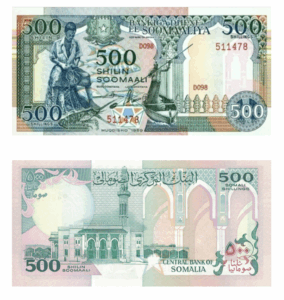
Due to severe currency devaluation, the Central Bank of Somalia introduced a higher-value banknote of 500 Somali Shillings to reduce the volume of notes in circulation.
Facing rising printing costs of smaller denominations, the Somali Government decided to introduce a high-value note. While a joint letter was sent to the IMF on 3 June 1990, the 1,000 Shilling note was already in circulation by 15 May 1990, as stated in Ministry of Finance Decree Lr. 6 of 7 May 1990.
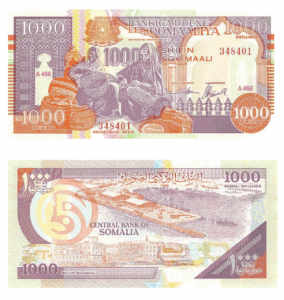

The Central Bank of Somalia was established in 1960 as Banca Nazionale Somala and became the Central Bank in 1975. After years of collapse following 1991, it was revived in 2009 and strengthened by the CBS Act of 2012. Today, it is the primary institution responsible for monetary stability and financial sector regulation in Somalia.
Copyright ©️ CBS 2025 All Rights Reserved.